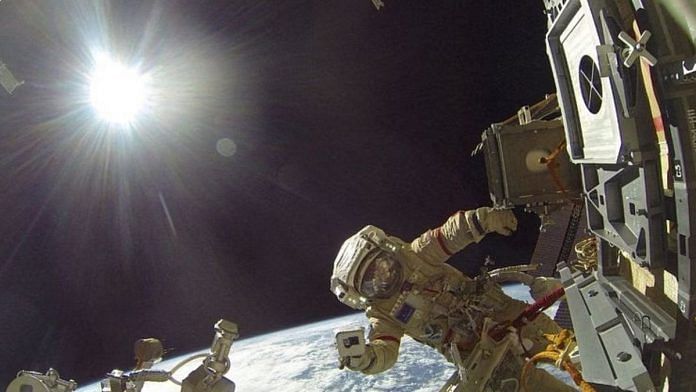In November 2022, a routine resupply mission to the International Space Station (ISS) delivered a rather unusual cargo – a machine that can 3D-print human tissue.
The 3D BioFabrication Facility and Advanced Space Experiment Processor is already being used to test the feasibility of creating human tissue in the zero or microgravity environment of space. If it’s successful, it could revolutionize the future of medicine here on Earth.
The World Economic Forum’s 2023 report Global Health and Healthcare Strategic Outlook: Shaping the Future of Health and Healthcare said innovation in medicine was essential in response to the COVID-19 pandemic and current geopolitical and environmental challenges.
Urging “actions to motivate systemic, long-term system change” in healthcare, the report said future investment must “ensure equality, resilience, innovation and sustainability are embedded as key pillars of health and healthcare in the future”.
As an example of innovation, the prospect of growing replacement organs in space – using a patient’s own cells – for transplantation on Earth takes some beating. The 3D printer aboard the ISS has begun its first tissue printing – a meniscus for a human knee.
“Printers that you might have in your office or at home have ink. And so our bio-printer uses bio-inks,” explained Richard Boling, Vice President of Redwire, the company that built the printer, in an interview with Minnesota Public Radio’s Tech Marketplace.
“Sometimes we use stem cells, sometimes we use very specific types of cells, muscle, vasculature, nerve, and mix that with a nutrient media that keeps those cells happy and alive.”
Beaten by gravity
Attempts to print human tissue on Earth have been defeated by gravity which causes the “bio-ink” to spread out into what Boling calls “a puddle”. In space, the tissue retains its shape, even enabling the creation of hollow objects such as heart valves.
To get the space-printed human organs into a state where they can withstand gravity when they are returned to Earth, they are subjected to “conditioning”, which Boling describes as similar to exercising in a gym.
Boling urges caution about expecting space-printed organ transplants in the near future. “This is not happening this year, but it will never happen if we don’t do what we are doing this year and next year and the next,” he said.
The goal is to be able to 3D-print a human heart but he says lessons learned from the current round of space experiments will have benefits long before that. “Along that road to that goal there is certainly applicability which improves human health too,” he said.
Nikolai Khlystov, Lead, Future of Space at the World Economic Forum, agrees this development could be transformative for health. “The experiments onboard the International Space Station to date have been successful in showing that it is possible to grow different types of human tissue in zero gravity environment – meaning in space,” he said.
3D printing technology is already being used to produce dental implants, replacement joints and made-to-measure prosthetics. In 2021, scientists in Australia revealed a 3D printing process that can be used inside the human body to replace bone damaged by cancer.
Human tissue printing experiments are just one response to a series of NASA initiatives to find new ways to make things in space that can support life and health on Earth. The Deep Space Food Challenge is designed to find ways to feed astronauts on long missions.
But it also has the potential to find new ways to produce food sustainably on Earth using fewer resources and helping to reduce food insecurity, especially in extreme environments, and in locations where disasters disrupt critical infrastructure.
Douglas Broom is Senior Writer, Forum Agenda
The article was first published in World Economic Forum. You can read the article here.
Also read: Don’t obsess over ‘human attributes’ of ChatGPT, Bard. AI has no consciousness






